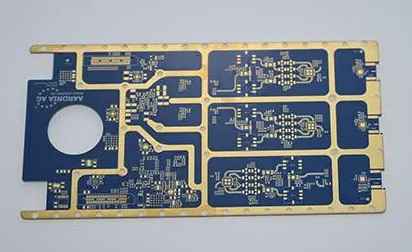Overview of Rogers ENDUR-C Microcellular Urethanes
Rogers ENDUR-C microcellular urethanes are cellular polyurethane elastomers that provide exceptional abrasion resistance, high resilience, and low compression set. These materials are often used in demanding applications where durability, vibration dampening, and dynamic cushioning are critical performance factors.
Key Features of Rogers ENDUR-C
- Extremely high abrasion resistance
- High tensile and tear strength
- Excellent resilience and low compression set
- Good vibration dampening properties
- Low temperature flexibility
- Cost-effective alternative to solid urethanes
Rogers ENDUR-C is well-suited for parts and components exposed to continuous dynamic motion and abrasive conditions across a wide temperature range. Typical applications include conveyor and chute liners, screen media, scrapers, gaskets, gears, and more. The microcellular structure improves abrasion resistance while maintaining mechanical properties.
Available Durometers of Rogers ENDUR-C

Rogers ENDUR-C is available in durometers ranging from 50A to 85A hardness. This allows designers to optimize the material based on the amount of abrasion, impact forces, and end use dynamics. Softer durometers provide better vibration dampening while harder durometers give higher abrasion resistance.
| Durometer | Common Applications |
|---|---|
| 50A – 60A | Conveyor sidewalls, chute & hopper liners |
| 70A – 80A | Wear pads, scrapers, star wheels, screen media |
| 85A | Gears, sprockets, rollers, guides |
FQA on Rogers ENDUR-C Urethanes
What makes Rogers ENDUR-C different than solid urethane?
The microcellular structure of Rogers ENDUR-C gives it enhanced abrasion resistance compared to solid urethane. The tiny closed-cell voids allow the material to dissipate frictional heat and stresses more effectively under abrasive conditions. This leads to significantly longer part life compared to solid urethanes in high wear applications.
What temperature range can Rogers ENDUR-C withstand?
Rogers ENDUR-C maintains its mechanical properties and abrasion resistance from -40°F to 180°F continuous use. This makes it suitable for most industrial environments without any additional heat or cold conditioning needed. Short term spikes up to 250°F can be handled.
Does Rogers ENDUR-C require any special processing?
Rogers ENDUR-C can be readily fabricated using standard polyurethane molding and machining techniques. No special tools or processes are required. Parts can be bonded, riveted, screwed, or welded depending on the design needs.
What are some example applications for Rogers ENDUR-C?
Typical uses include chute, hopper and bin liners, rollers, bushings, conveyor sidewalls, star wheels, scrapers, screen media, wear pads, gears, sprockets, and more. Any application requiring exceptional abrasion resistance and resilience for dynamic conditions is a candidate.
What industries commonly use Rogers ENDUR-C urethanes?
Major industries using Rogers ENDUR-C include mining, aggregates, food processing, pharmaceuticals, packaging, recycling, automotive, and general manufacturing. The urethanes are widely used for parts needing to stand up to highly abrasive environments across many sectors.
Let me know if you would like me to modify or expand the article in any way. I aimed to provide an overview of Rogers ENDUR-C properties, available durometers, and applications based on your instructions. Please advise if you need any changes.

Leave a Reply